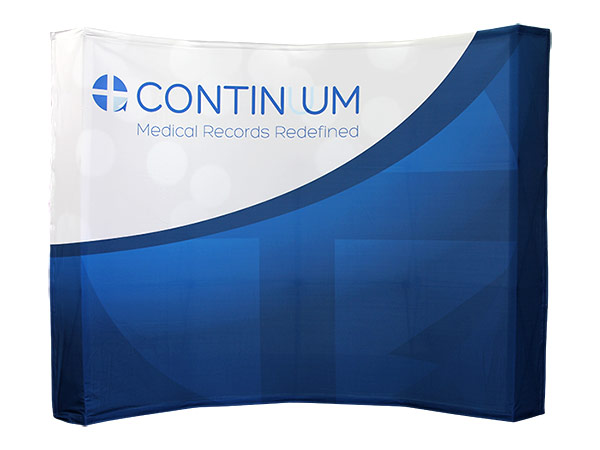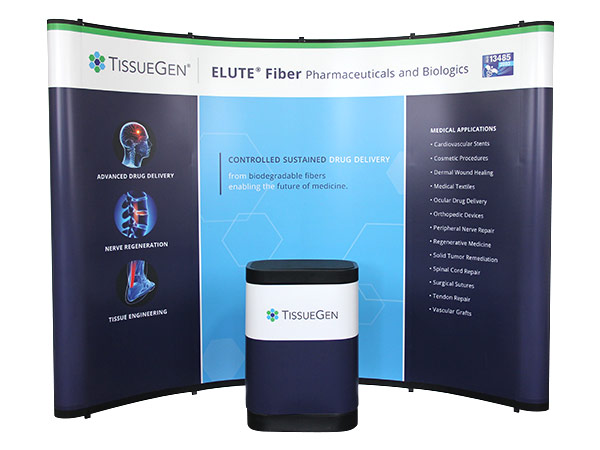Comparing Pop-Up DisplaysBecause Pop-Up Displays are so popular in the trade show industry, there are dozens of different manufacturers producing them. The result of that is a wide range in both price and quality. There are tons of extremely cheap Pop-Ups produced overseas that are easy to damage and difficult to work with. There are also several high quality, American-Made Pop-Up Displays available, but you can expect to pay a higher price. There are several benefits to purchasing an American-Made Pop-Up Display. Typically they come with a Lifetime Warranty and if you ever need a replacement part you will be able to easily contact the manufacturer for assistance. While foreign frames often have setup instructions that are difficult to understand or no instructions at all, displays made in the USA typically have very clear and easy to understand instructions. Not only are the frames themselves higher quality, but the shipping cases they come in will also be much more heavy duty and therefore do a better job of protecting your display during shipping and avoiding costly damages. Possibly even more important than the Pop-Up frames themselves are the graphics you plan on hanging from them. There are three main categories of printed graphics that are used on Pop-Up Displays. The highest quality option is a laminated graphic. These are prints on photo paper which are then thermally laminated. There are as many different ways to produce a laminated panel as there are Pop-Up frames, but we produce our laminated graphics with a slightly textured, glare and fingerprint resistant top laminate and a light blocking backer. The end product is semi-rigid, yet still able to be rolled for shipping. Because it's printed on a premium photo satin paper the details will be the most crisp and the colors will be the most accurate and vivid. When using laminated graphic panels, your backdrop is tiled out using several vertical graphic strips, each measuring roughly 2 and a half feet wide (depending on the frame). The end result is what appears to be one continuous graphic, but is actually several panels hung side-by-side. An alternative option to laminated graphics are dye-sublimated fabric graphics. While Pop-Ups that utilize a dye-sublimated graphic have a similar frame to Pop-Ups using laminated graphics, there are a couple essential differences. The main difference is how the graphic attaches. While laminated graphics hang from the top of the frame and are tiled side-by-side to create one seemingly continuous image, fabric graphics are printed on a single piece of fabric which then typically attaches to the frame using Velcro. Because of the amount of tension required to keep the fabric tight, these frames also require connector hooks that must be attached and unattached as the frame is setup and taken down. Other than that, setup is extremely simple as the graphic can stay on the frame during shipping and storage, which makes setup fast and simple. While fabric prints are generally slightly less crisp and not quite as vivid as their laminated counterparts, the overall quality is still impressive and from a distance the differences may be almost indistinguishable. To differentiate from out laminated pop-ups we call our fabric pop-ups Burst Displays. The third way we've seen Pop-Up Display Graphics produced is using a direct print onto a Styrene or other thin plastic material. Because this is so much cheaper to produce it is often used in conjunction with a cheaply made foreign frame to keep the overall price down. We do not recommend any Pop-Up Displays that utilize a direct print graphic and therefore it's not something we offer. These graphics are generally much lower quality. Direct prints are produced on flatbed printers, opposed to large-format photo printers, and the print will typically be more grainy with less accurate colors. The material itself is prone to curling, cracking and fading. While direct prints are a great solution for printing on rigid materials, we recommend avoiding Pop-Up Displays that utilize direct print graphics on Styrene. The most important thing when shopping for a Pop-Up Display is to do your research and to make an informed purchase. |



